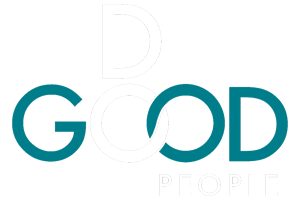What you will find in this article
Corporate sustainability leadership faces great challenges today, from stakeholder demands to an everchanging regulatory landscape, how can companies cope with all of it?
Sustainability is an imperative for companies, and as new regulations and demands begin to gather at organizations’ doorsteps, sustainability leaders are met with more and more pressure from all fronts in society.
The reality is that, however much we need and demand for sustainable business, it is a complex matter that requires a lot of carefully crafted and coordinated resources.
And in this scenario, corporate sustainability leadership faces great new challenges; here we have gathered a few of these in an effort to understand the best way to manage them successfully.

The 4 most common challenges in corporate sustainability leadership today
Any sustainability leader reading this, as well as anyone with close ties to the world of corporate sustainability, knows just how complicated, interconnected and yet necessary it is to pursue and overcome the following challenges.
From a lack of resources, to the so called regulatory tsunami, there are many many things on sustainability departments’ tables, and so we wanted to give a little light to some of the main challenges corporate sustainability leadership is facing today.
Prioritizing sustainability causes
As we have already mentioned, corporate sustainability comes with many and very diverse challenges and causes, all of which are just as important as the one before. But when a company or business chooses to pursue a sustainable transformation, they need to start somewhere.
But, contrary to what some believe, choosing isolated sustainable initiatives will not bring the necessary core transformation businesses need to call themselves sustainable.
Make employees an active part of the sustainability strategy
Instead, companies need to asses and undergo a holistic and comprehensive transformation, and do so in a scalable way. As the term ESG itself suggests, all three of these legs need to be prioritized equally and adequately.
This is, while some initiatives or causes are concerned with making the core of the business itself sustainable, others can put the focus on advancing and growing the sustainable portfolio of the organization.
Setting clear measurable goals and metrics
In a world as complex as sustainability, clear measurable goals and metrics can become one of the greatest pains for many sustainable or ESG leaders, specially as they try to win over and convince stakeholders of the benefits of such transformation.
Not only that, even as we set clear and ambitious goals for ourselves, finding the right metrics can be very tricky, and some initiatives could even feel useless if the latter metrics are not chosen correctly.
In this cases, looking for guidance is any sustainability leader’s best chance. For example, one can focus on the United Nations’ Sustainable Development Goals and use the metrics set out by such a renowned institution as their own.
Funding the sustainable transformation
Any major business transformation requires the reallocation of resources, from capital expenses to talent, and of course, sustainability is no exception.
Furthermore, given the legal and regulatory importance that such a transformation carries within itself, the reallocation of resources is highly strategic.
For many they key is to start by making small but rapid progress by utilizing already available resources. This early stage progress will help unlock further efforts that can take longer.
Another great tip is to leverage already ongoing transformation efforts and applying the sustainability lenses to it.

The everchanging regulatory landscape
The strong regulatory landscape surrounding sustainability, specially that of the European Union, is fairly new, and has come to evolve greatly in a matter of just a few years. For many companies it has felt like a race against the clock.
Staying up to date with all this regulations and requirements is not an easy task, let alone dealing with all the changes and transformations that ensue.
And while staying up to date with regulatory changes is necessary, organization also have the ability to take part and act upon the future of sustainability requirements by engaging in proactive advocacy.
What are the main inconsistencies companies find within their sustainability strategies?
How can employees help sustainability leaders?
While it is primarily the responsibility of sustainability leaders to pursue the best actions and initiatives and be aligned with regulations and stakeholder demands, we can’t deny there is a smidge of responsibility that falls on all individuals.
Inside an organization, such individuals are employees, so naturally sustainability leaders can help but ask themselves, how can employees actually help achieve ESG or sustainable goals?

In DoGood, we aim to simplify the complex web of sustainability objectives for companies by offering a platform that translates the high-level ESG (Environmental, Social, Governance) objectives into actionable tasks for every single employee.
Then, each employee not only knows how to make an impact but also feels empowered to contribute meaningfully to the greater sustainable strategy.
No more vague directives. No confusion. DoGood automates the process, making it seamless for the workforce to know precisely what steps to take.







